A favourite tourism destination of the French and foreigners alike, few places in France offer such a romantic and beautiful view of the country.
The Dordogne is in southwest France and occupies a picturesque location between the Loire Valley and Pyrenees Mountains. There’s history at every corner, and usually a good traditional restaurant not far from that same corner as well.
Among the vineyards, forests, and rolling hills, there are several fortified towns also known as bastides. And of course, with that, comes castles. In this post, we’ll take a look at some of the most interesting and beautiful castles in Dordogne.

17 Castles to Visit in Dordogne
1. Château de Castelnau-Bretenoux
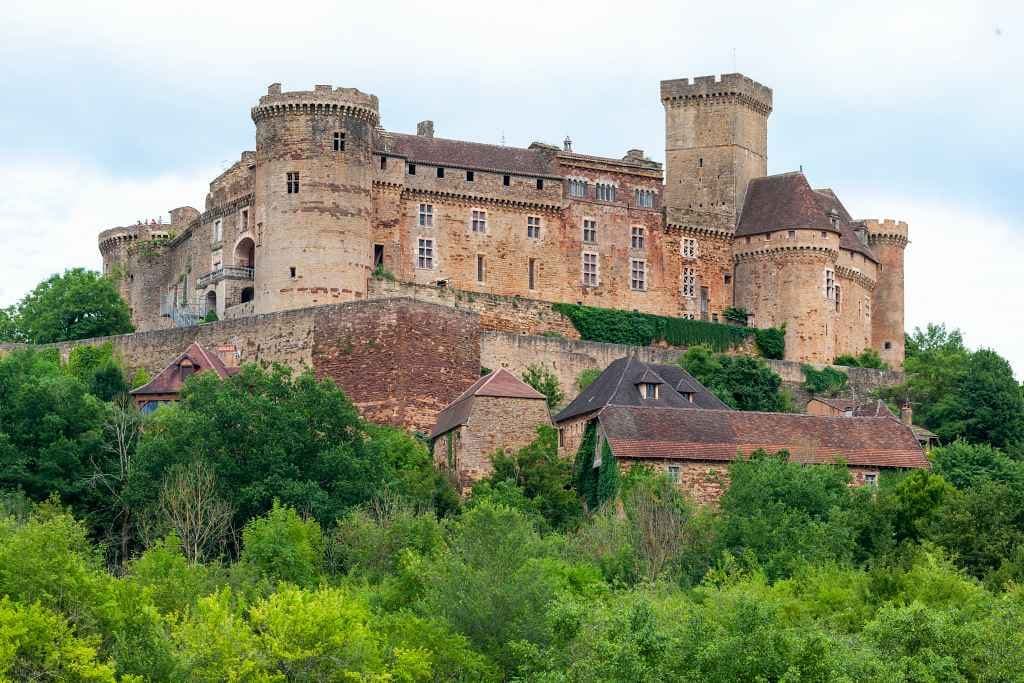
First on our list is one of the finest examples of medieval architecture in the Dordogne. Although construction began around the year 1100, it was modified and upgraded during the 15th century, perfectly primed for defending its position.
It was taken by England in the Hundred Years’ War in 1159 but returned to the barons of Castelnau after that. The castle sits atop a hill with incredible views of the Dordogne valley. It is recognisable by its characteristic red stone.
A fire in 1851 severely damaged the castle, but it was restored to its former glory by a French opera singer, Jean Mouliérat. The chateau is a great day trip from Toulouse or Limoges.
Where: Prudhomat
When: Around the 12th century
Open for Visit: Yes, check here for more information.
2. Château de Montal

The Château de Montal is unusual as it was built according to the specifications of a woman – Jeanne de Balsac, the lady of Montal. The castle was completed in the early 16th century but fell into disrepair after her death as it wasn’t fully complete.
It was fully restored in 2016 and opened to the public. Visitors can take guided tours of the castle to see the art collection and learn its history; they can also take a wander around the French hedge garden.
Where: Saint Jean Lespinasse
When: 16th century
Open for Visit: Yes, check here for more information.
3. Château de Rocamadour

Known as a vertical village, Château de Rocamadour is one of the most evocative and impressive castles in Dordogne. Its spectacular location on a cliffside over the Alzou Valley is enough to blow the mind.
The Sacred City is a UNESCO World Heritage Site, and it’s part of the Camino de Santiago (Way of St James). As well as the castle, there’s a stunning chapel and Romanesque-Gothic basilica.
While Château de Rocamadour is impressive, you’ll want to spend a whole day getting to know the village that surrounds it.
Where: Rocamadour
When: 12th century
Open for Visit: Yes
4. Château de Belcastel

With a commanding view over the Aveyron River, the Château de Belcastel is a medieval fortress built on the remains of a 9th-century chapel.
The village was listed as one of the most beautiful villages in France, and it was restored alongside the castle in the 20th century. Visitors can see the courtyards and galleries of the castle on a self-guided tour.
Where: Belcastel
When: 13th century
Open for Visit: Yes, check here for more information.
5. Château de Beynac

One of the best-preserved fortresses near Perigord, Château de Beynac is perched on a cliff by the Dordogne River. Richard the Lionheart, the once king of England, ruled this place. It’s built opposite the Château of Castelnaud, the French castle which opposed the English occupation.
The 12th-century keep is designed in Romanesque style, and you can reach it along by a set of circular stone stairs. Peer out over the village and watch the canoes passing by along the serene river.
Where: Beynac et Cazenac
When: 12th century
Open for visit: Yes, check here for more information.
6. Château des Milandes

Château des Milandes is another beautiful castle in Castelnaud la Chappelle, but this one is a bit more modern. The castle and gardens are from the French Renaissance in the 15th century, initially built by the Lord of Castelnaud to please his wife.
The castle has become more famous recently for being the home of legendary artist Josephine Baker. There’s a brasserie, bird of prey show, and stunning gardens to explore.
Where: Castelnaud la Chappelle
When: 15th century
Open for Visit: Yes, check here for more information.
7. Château de Val
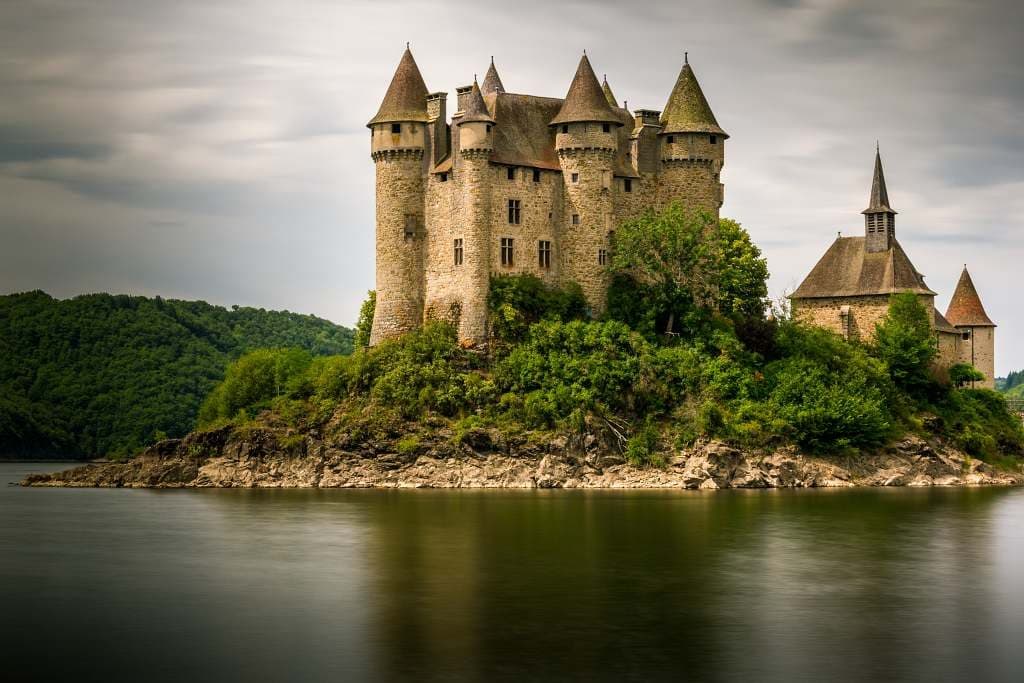
Set on a peninsula stretching out into a lake, Château de Val is a unique Dordogne Castle. You’ll have to cross a narrow causeway to get over to its pepperpot-roofed towers. The fairy tale castle only becomes more magical at night; it is lit up at dusk in the summer.
Where: Lanobre
When: 13th century
Style: Gothic
Open for visit: Yes, check here for more information.
8. Chateau de Commarque
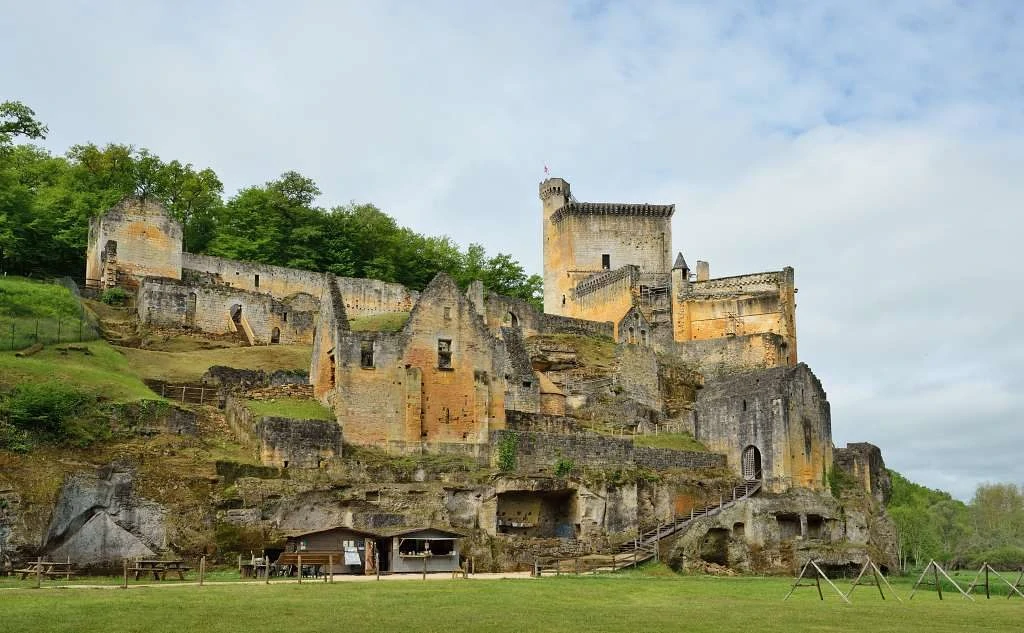
Despite the castle dating back to the 12th century, Château de Commarque was only rediscovered in the 1970s before being renovated by Hubert de Commarque.
The remains of the Oven House and Buttress House Tower are still intact, as well as the keep, which you can climb for great views. It’s not just the castle that is interesting here; there is evidence that people lived here long before it was constructed, with cave drawings on-site and Troglodyte dwellings.
Where: Les Eyzies de Tayac Sirueil
When: 12th century
Open for Visit: Yes. Check here for more information.
9. Gageac Castle
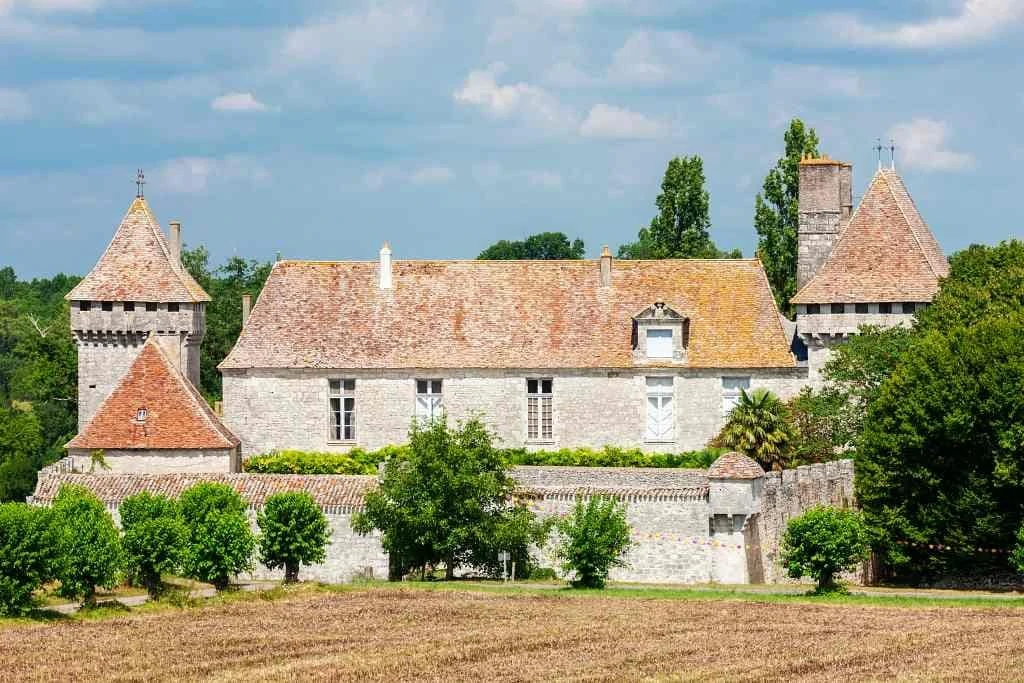
Originally built as a stronghold in the 12th century, the castle had further renovation work done in the 14th and 18th centuries to make it into the charming architectural marvel it is today.
It began life as a fortress and was besieged in the Hundred Years’ War, before being converted to a residence. It is surrounded by a number of excellent vineyards on the wine route between Bergerac and Sainte Foy la Grande. In the 19th century, the residence reared silkworms, which were sent to Lyon to make high-quality silks.
Where: Gageac et Rouillac
When: 12th century
Open for Visit: Yes. Check here for more information.
10. Château de Bourdeilles
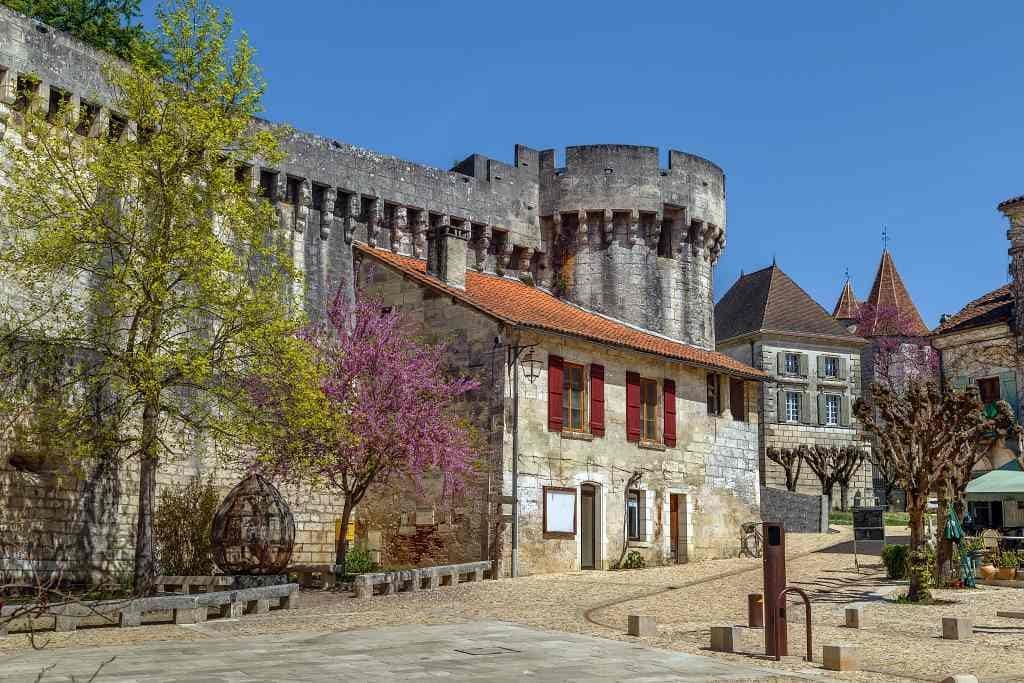
Château de Bordeilles consists of two parts – an older defensive fortress and a newer renaissance palace. The golden room has a beautifully painted ceiling, and visitors to the castle can see a furniture collection from the 15th – 19th centuries.
There’s also a courtyard garden by the Renaissance Palace, while both the old and new castles are surrounded by a fortified wall.
Where: Bourdeilles
When: 14th century
Open for Visit: Yes, check here for more information.
11. Château de Bridoire

Set in the Monbazillac Vineyards, this castle was once the home of the Marquis de Foucauld. A visit to the castle means you can see the historic kitchens, dining room, and pool table.
However, the highlight of visiting this castle is that you can have a go at playing some of the 80 historic games on site, including pétanque, egg and spoon races, and archery. After all, it’s also known as the Château des Jeux (Castle of Games).
Where: Ribagnac
When: 15th century
Open for Visit: Yes. Check here for more information.
12. Château de Castelnaud-la-Chapelle
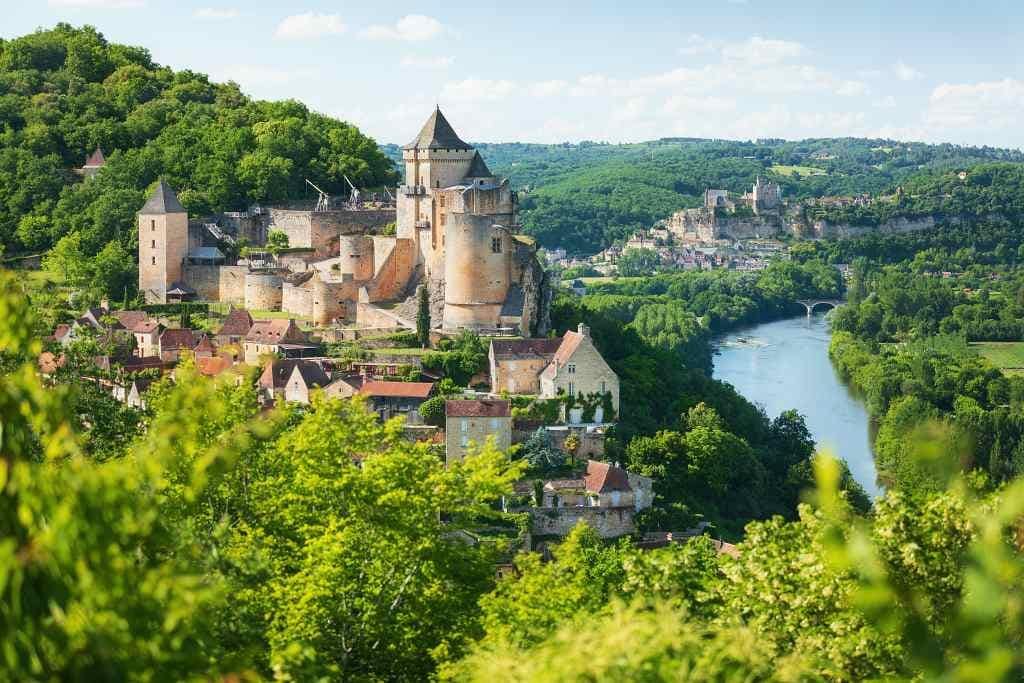
Château de Castelnaud is one of the most imposing castles in Dordogne. It sits on the other side of the river from the Castle Beynac. Castelnaud changed hands between the French and the English no less than seven times as the two nations fought for control in the Hundred Years War.
It fell into ruin after the French Revolution, but renovations began in 1966. Nowadays, the castle holds a museum of war, with full-scale replicas of war machines.
Where: Castelnaud la Chappelle
When: 13th century
Open for Visit: Yes. Check here for more information.
13. Chateau de Hautefort
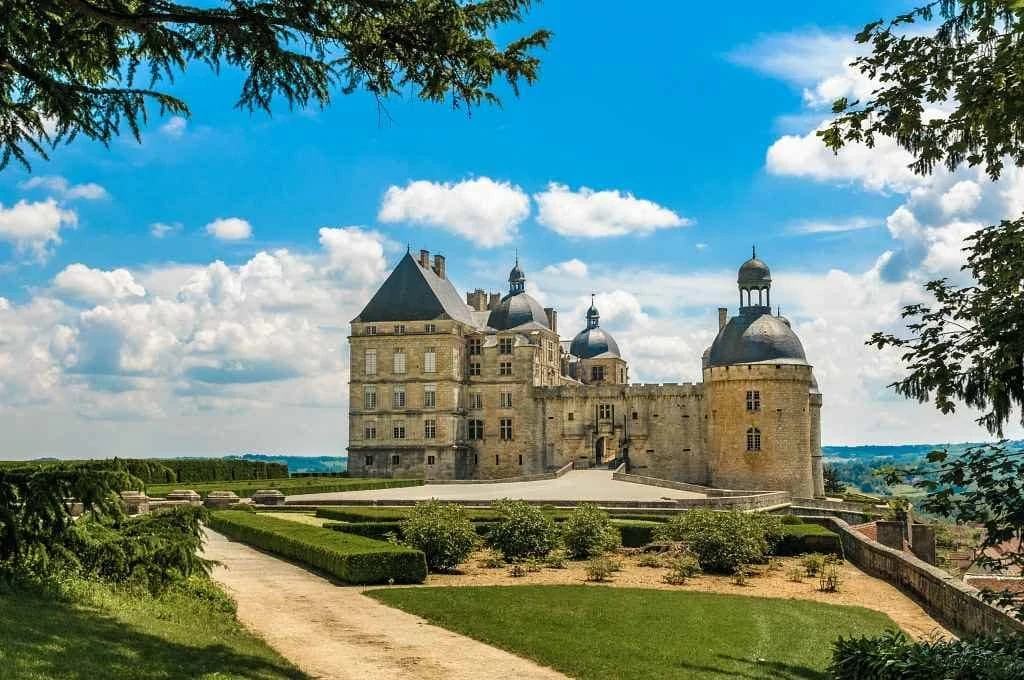
One of the more modern castles in Dordogne, Château de Hautefort is a 17th-century castle built on the site of a 12th-century fortress, with an added French garden.
It was restored to the beautiful castle we can see today by the Baron and Baroness de Bastard, who made it their lives’ work before its completion in 1968. This splendid building also has an impressive collection of tapestries and 17th-century paintings.
Where: Hautefort
When: 17th century
Open for Visit: Yes, check here for more information.
14. Château de Jumilhac
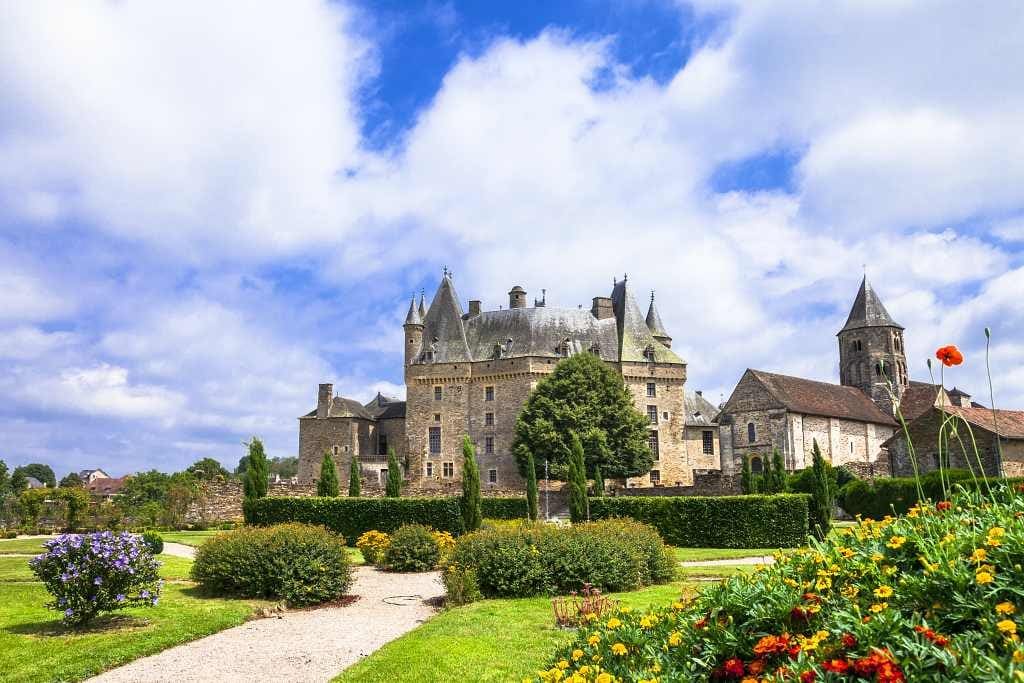
The first tower of the Château de Jumilhac was built in 1152, yet it was not completed until the 17th century. The roof is described as ‘one of the most romantic roofs in France.’
There are lots of turrets and ironwork. The first count of Jumilhac was an alchemist, and even though it was against the law, there’s evidence of alchemy in the castle. You can learn more about this on a guided tour.
Where: Jumilhac-le-Grand
When: 13th century – 17th century
Open for Visit: Yes. Check here for more information.
15. Château de Mareuil
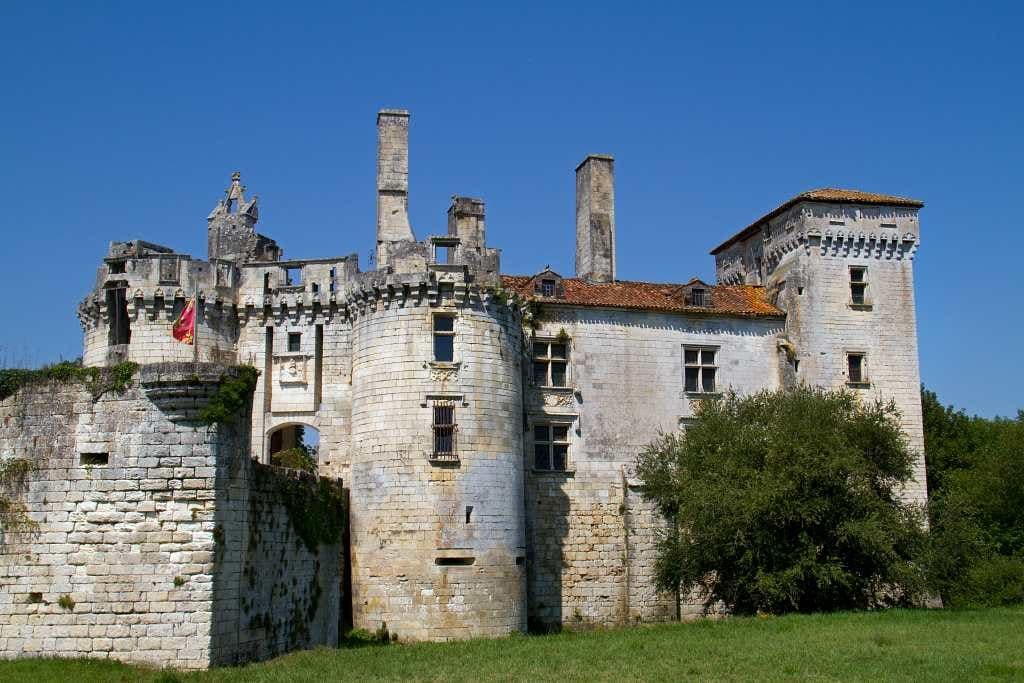
The Châtea de Mareuil was the seat of one of the four baronies of the Périgord. The others are Beynac, Biron and Bourdeilles. The castle was rebuilt in the 15th century where there was initially a medieval stronghold left from the Hundred Years’ War.
There’s a Gothic-style chapel on-site. If you visit the castle, you’re likely to be shown around by the owners, who will share their collection of antiques with you. Château de Mareuil is one of the more unique castles in Dordogne. Don’t confuse it with the similarly named nearby Château Mareuil.
Where: Mareuil
When: 15th century
Open for Visit: Yes, check here for more information.
16. Château de Monbazillac
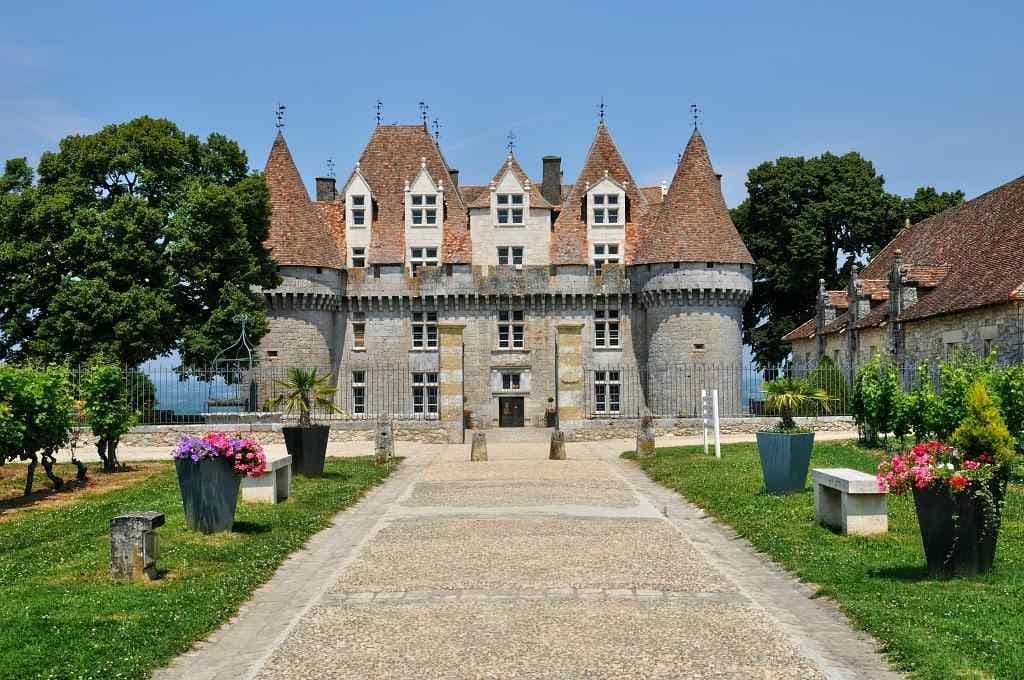
Monbazillac is better known for its wine than its castles. However, you can combine a love for both at the Château, with a chance to sample one of the world’s most loved sweet white wines at the castle.
The Renaissance Castle was built in the 16th century and was left unscathed in wars and revolutions that scarred the next few centuries in France. You can visit the staterooms and see the castle’s collection of art and furniture. It often holds events, including open-air cinemas in Summer.
Where: Monbazillac
When: 16th century
Open for Visit: Yes. Check here for more information.
17. Château de la Mothe
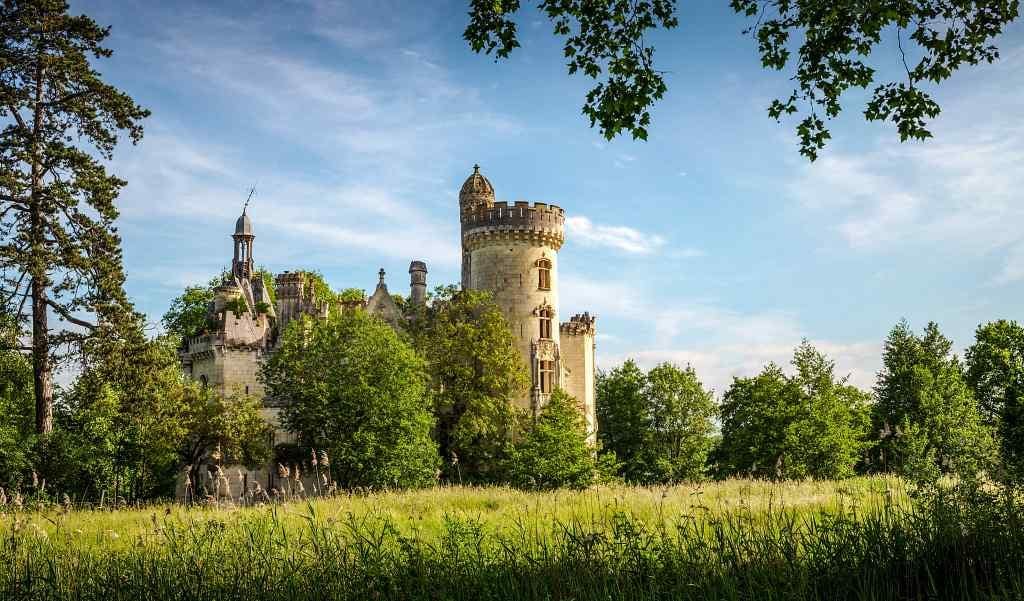
The Château de la Mothe has one of the most unique and intriguing stories of the castles in Dordogne. It’s technically owned by almost 30,000 people after an international crowdfunding campaign saved the castle from ruin following a destructive fire in 1932.
It destroyed most of the rare books in the library, as well as priceless art, furniture, and tapestries. Heritage lovers collectively bought the castle in 2017, and this has attracted many visitors too.
It was built in the 13th century, being taken twice by the English in the Middle Ages and being ransacked during the French revolution.
Where: Les Trois Moutiers
When: 13th century
Open for Visit: Yes. Check here for more information.
